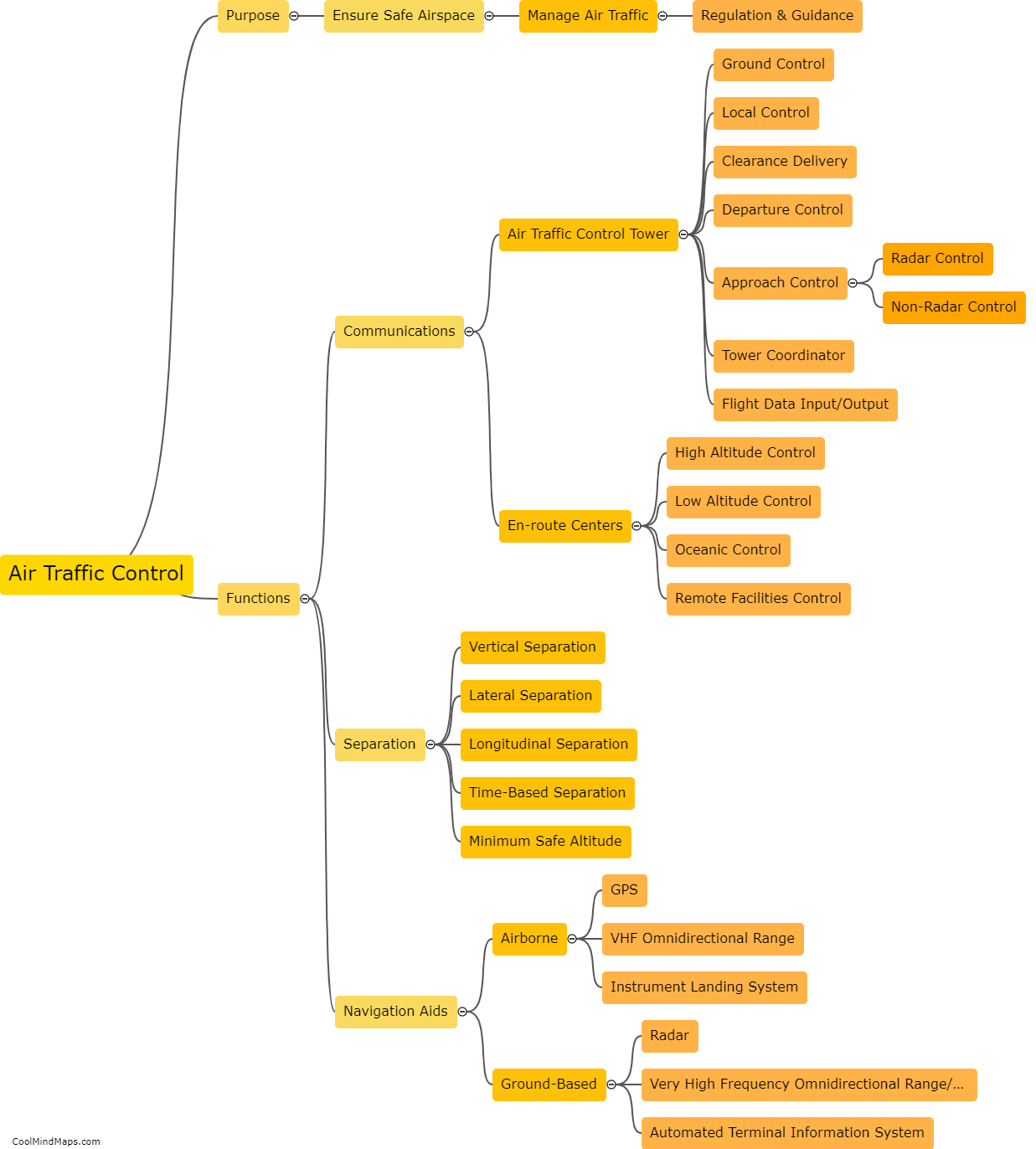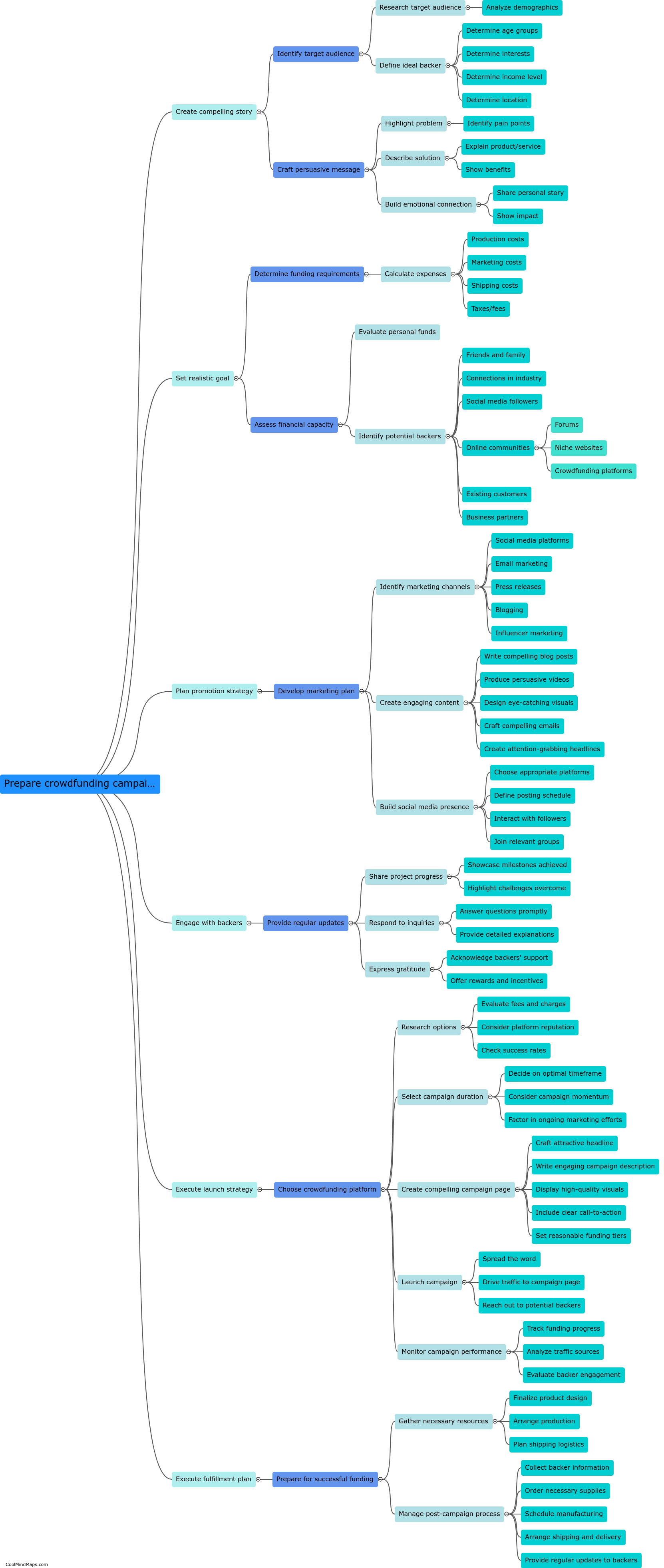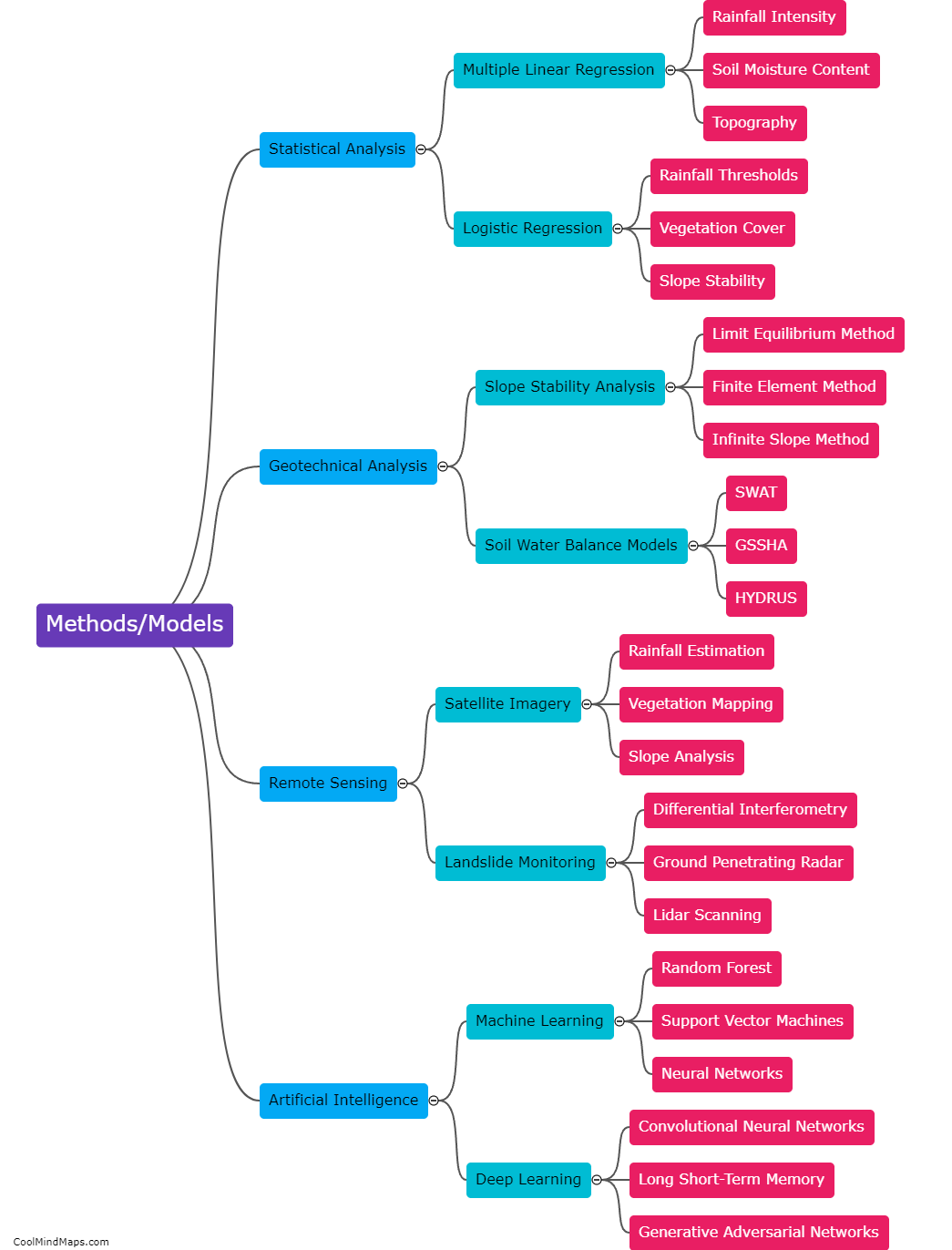What are the different types of landslides?
There are several different types of landslides, each distinguished by their mechanism of movement and the material involved. Common types include debris flows, which are fast-moving masses of soil, rocks, and water; rockslides, which occur when layers of rocks detach from a slope and slide downwards; mudslides or mudflows, which involve saturated soil and water resulting in a viscous flow; and earth slides, which are typically slow-moving landslides caused by the failure of weak rocks or soils. Other types include rotational slides, translational slides, and topples. The specific characteristics and triggers of each type of landslide vary, making it crucial to understand their distinctions for effective prevention and management.

This mind map was published on 11 February 2024 and has been viewed 104 times.











